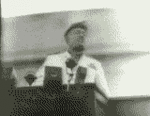phouse
Airman
And what results they achieved! I think Italy was generally regarded as a technological leader in aviation in the 1930s. It'd be hard to counter that assertion. In 1931 though, the AS6 was a top notch inline engine that could have/should have had an analogous military version yet none ever came to be. I think that deserves a huge pourqoi?!? I suppose only Fiat knows.
I wouldn't dare claim that it would have made a huge difference in the RA's WW2 showing but I believe that we would have seen Serie 5 aircraft a lot sooner than 1943.
I wouldn't dare claim that it would have made a huge difference in the RA's WW2 showing but I believe that we would have seen Serie 5 aircraft a lot sooner than 1943.

